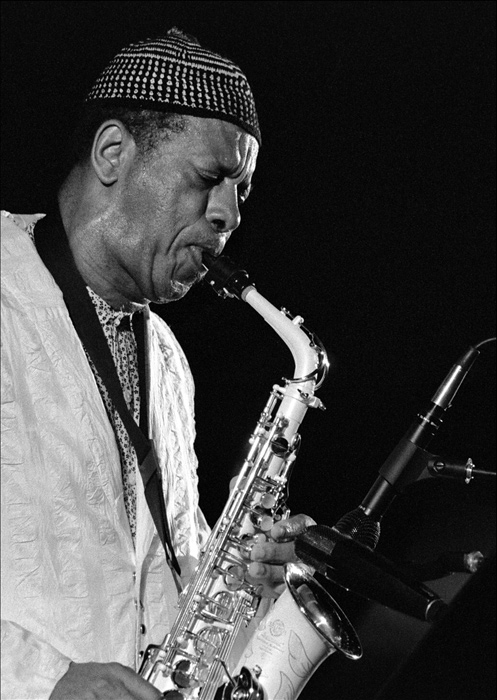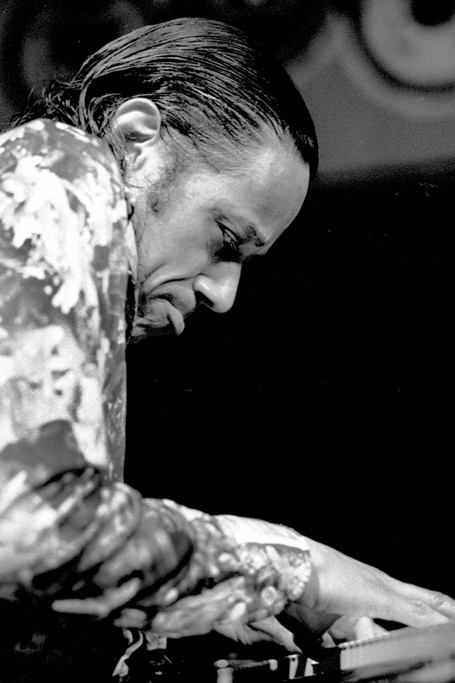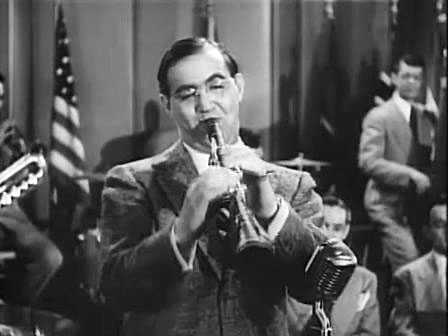|
Free Jazz
Free jazz is an experimental approach to jazz improvisation that developed in the late 1950s and early 1960s when musicians attempted to change or break down jazz conventions, such as regular tempos, tones, and chord changes. Musicians during this period believed that the bebop, hard bop, and modal jazz that had been played before them was too limiting. They became preoccupied with creating something new and exploring new directions. The term "free jazz" has often been combined with or substituted for the term "avant-garde jazz". Europeans tend to favor the term "free improvisation". Others have used "modern jazz", "creative music", and "art music". The ambiguity of free jazz presents problems of definition. Although it is usually played by small groups or individuals, free jazz big bands have existed. Although musicians and critics claim it is innovative and forward-looking, it draws on early styles of jazz and has been described as an attempt to return to primitive, often re ... [...More Info...] [...Related Items...] OR: [Wikipedia] [Google] [Baidu] |
Jazz
Jazz is a music genre that originated in the African-American communities of New Orleans, Louisiana in the late 19th and early 20th centuries, with its roots in blues and ragtime. Since the 1920s Jazz Age, it has been recognized as a major form of musical expression in traditional and popular music. Jazz is characterized by swing and blue notes, complex chords, call and response vocals, polyrhythms and improvisation. Jazz has roots in European harmony and African rhythmic rituals. As jazz spread around the world, it drew on national, regional, and local musical cultures, which gave rise to different styles. New Orleans jazz began in the early 1910s, combining earlier brass band marches, French quadrilles, biguine, ragtime and blues with collective polyphonic improvisation. But jazz did not begin as a single musical tradition in New Orleans or elsewhere. In the 1930s, arranged dance-oriented swing big bands, Kansas City jazz (a hard-swinging, bluesy, improvisationa ... [...More Info...] [...Related Items...] OR: [Wikipedia] [Google] [Baidu] |
Hard Bop
Hard bop is a subgenre of jazz that is an extension of bebop (or "bop") music. Journalists and record companies began using the term in the mid-1950s to describe a new current within jazz that incorporated influences from rhythm and blues, gospel music, and blues, especially in saxophone and piano playing. David H. Rosenthal contends in his book ''Hard Bop'' that the genre is, to a large degree, the natural creation of a generation of African-American musicians who grew up at a time when bop and rhythm and blues were the dominant forms of black American music. Prominent hard bop musicians included Horace Silver, Clifford Brown, Charles Mingus, Art Blakey, Cannonball Adderley, Miles Davis, John Coltrane, Hank Mobley, Thelonious Monk and Lee Morgan. Musical style Hard bop is sometimes referred to as "funky hard bop". The "funky" label refers to the rollicking, rhythmic feeling associated with the style. The descriptor is also used to describe soul jazz, which is commonly a ... [...More Info...] [...Related Items...] OR: [Wikipedia] [Google] [Baidu] |
Swing Music
Swing music is a style of jazz that developed in the United States during the late 1920s and early 1930s. It became nationally popular from the mid-1930s. The name derived from its emphasis on the off-beat, or nominally weaker beat. Swing bands usually featured soloists who would improvise on the melody over the arrangement. The danceable swing style of big bands and bandleaders such as Benny Goodman was the dominant form of American popular music from 1935 to 1946, known as the swing era. The verb "to swing" is also used as a term of praise for playing that has a strong groove or drive. Musicians of the swing era include Duke Ellington, Benny Goodman, Count Basie, Cab Calloway, Jimmy Dorsey, Tommy Dorsey, Woody Herman, Harry James, Lionel Hampton, Glenn Miller, Artie Shaw and Django Reinhardt. Overview Swing has its roots in 1920s dance music ensembles, which began using new styles of written arrangements, incorporating rhythmic innovations pioneered by Louis Armstrong ... [...More Info...] [...Related Items...] OR: [Wikipedia] [Google] [Baidu] |
Metre (music)
In music, metre ( Commonwealth spelling) or meter (American spelling) refers to regularly recurring patterns and accents such as bars and beats. Unlike rhythm, metric onsets are not necessarily sounded, but are nevertheless implied by the performer (or performers) and expected by the listener. A variety of systems exist throughout the world for organising and playing metrical music, such as the Indian system of '' tala'' and similar systems in Arabic and African music. Western music inherited the concept of metre from poetry, where it denotes: the number of lines in a verse; the number of syllables in each line; and the arrangement of those syllables as long or short, accented or unaccented. The first coherent system of rhythmic notation in modern Western music was based on rhythmic modes derived from the basic types of metrical unit in the quantitative metre of classical ancient Greek and Latin poetry. Later music for dances such as the pavane and galliard consisted of m ... [...More Info...] [...Related Items...] OR: [Wikipedia] [Google] [Baidu] |
Improvisation
Improvisation is the activity of making or doing something not planned beforehand, using whatever can be found. Improvisation in the performing arts is a very spontaneous performance without specific or scripted preparation. The skills of improvisation can apply to many different faculties, across all artistic, scientific, physical, cognitive, academic, and non-academic disciplines; see Applied improvisation. Improvisation also exists outside the arts. Improvisation in engineering is to solve a problem with the tools and materials immediately at hand. Improvised weapons are often used by guerrillas, insurgents and criminals. Engineering Improvisation in engineering is to solve a problem with the tools and materials immediately at hand. Examples of such improvisation was the re-engineering of carbon dioxide scrubbers with the materials on hand during the Apollo 13 space mission, or the use of a knife in place of a screwdriver to turn a screw. Engineering improvisations ... [...More Info...] [...Related Items...] OR: [Wikipedia] [Google] [Baidu] |
Thirty-two-bar Form
The 32-bar form, also known as the AABA song form, American popular song form and the ballad form, is a song structure commonly found in Tin Pan Alley songs and other American popular music, especially in the first half of the 20th century. As its alternative name ''AABA'' implies, this song form consists of four sections: an eight-bar A section; a second eight-bar A section (which may have slight changes from the first A section); an eight-bar B section, often with contrasting harmony or "feel"; and a final eight-bar A section. The core melody line is generally retained in each A section, although variations may be added, particularly for the last A section. Examples of 32-bar AABA form songs include " Over the Rainbow", "I Got Rhythm", "What'll I Do", "Make You Feel My Love", " The Man I Love", and " Blue Skies". Many show tunes that have become jazz standards are 32-bar song forms. Basic song form At its core, the basic AABA 32-bar song form consists of four sections, ea ... [...More Info...] [...Related Items...] OR: [Wikipedia] [Google] [Baidu] |
Twelve-bar Blues
The 12-bar blues (or blues changes) is one of the most prominent chord progressions in popular music. The blues progression has a distinctive form in lyrics, phrase, chord structure, and duration. In its basic form, it is predominantly based on the I, IV, and V chords of a key. Mastery of the blues and rhythm changes are "critical elements for building a jazz repertoire". Background The blues originated from a combination of work songs, spirituals, and early southern country music. The music was passed down through oral tradition. It was first written down by W. C. Handy, an African American composer and band leader. Its popularity led to the creation of "race records" and the popularity of blues singers like Bessie Smith and Ma Rainy. The style of music heard on race records was later called "rhythm and blues" (R & B). As the music became more popular, more people wanted to perform it. General patterns that existed in the blues were formalized, one of these being the 12-bar ... [...More Info...] [...Related Items...] OR: [Wikipedia] [Google] [Baidu] |
John Coltrane
John William Coltrane (September 23, 1926 – July 17, 1967) was an American jazz saxophonist The saxophone (often referred to colloquially as the sax) is a type of single-reed woodwind instrument with a conical body, usually made of brass. As with all single-reed instruments, sound is produced when a reed on a mouthpiece vibrates to pro ..., bandleader and composer. He is among the most influential and acclaimed figures in the Jazz#Post-war jazz, history of jazz and 20th-century music. Born and raised in North Carolina, Coltrane moved to Philadelphia after graduating high school, where he studied music. Working in the bebop and hard bop idioms early in his career, Coltrane helped pioneer the use of Modal jazz, modes and was one of the players at the forefront of free jazz. He led at least fifty recording sessions and appeared on many albums by other musicians, including trumpeter Miles Davis and pianist Thelonious Monk. Over the course of his career, Coltrane's music t ... [...More Info...] [...Related Items...] OR: [Wikipedia] [Google] [Baidu] |
Pharoah Sanders
Pharoah Sanders (born Ferrell Lee Sanders; October 13, 1940 – September 24, 2022) was an American jazz saxophonist. Known for his overblowing, harmonic, and multiphonic techniques on the saxophone, as well as his use of "sheets of sound", Sanders played a prominent role in the development of free jazz and spiritual jazz through his work as a member of John Coltrane's groups in the mid-1960s, and later through his solo work. He released over thirty albums as a leader and collaborated extensively with vocalist Leon Thomas and pianist Alice Coltrane, among many others. Fellow saxophonist Ornette Coleman once described him as "probably the best tenor player in the world". Sanders' take on “spiritual jazz” was rooted in his inspiration from religious concepts such as Karma and Tawhid, and his rich, meditative performance aesthetic. This style was seen as a continuation of Coltrane's work on albums such as ''A Love Supreme''. As a result, Sanders was considered to have been a di ... [...More Info...] [...Related Items...] OR: [Wikipedia] [Google] [Baidu] |
Pharoah Sanders Photo
Pharaoh (, ; Egyptian: ''pr ꜥꜣ''; cop, , Pǝrro; Biblical Hebrew: ''Parʿō'') is the vernacular term often used by modern authors for the kings of ancient Egypt who ruled as monarchs from the First Dynasty (c. 3150 BC) until the annexation of Egypt by the Roman Empire in 30 BC. However, regardless of gender, "king" was the term used most frequently by the ancient Egyptians for their monarchs through the middle of the Eighteenth Dynasty during the New Kingdom. The term "pharaoh" was not used contemporaneously for a ruler until a possible reference to Merneptah, c. 1210 BC during the Nineteenth Dynasty, nor consistently used until the decline and instability that began with the Twenty-Fifth Dynasty. In the early dynasties, ancient Egyptian kings had as many as three titles: the Horus, the Sedge and Bee ( ''nswt-bjtj''), and the Two Ladies or Nebty ( ''nbtj'') name. The Golden Horus and the nomen and prenomen titles were added later. In Egyptian society, religion w ... [...More Info...] [...Related Items...] OR: [Wikipedia] [Google] [Baidu] |
Ornette Coleman
Randolph Denard Ornette Coleman (March 9, 1930 – June 11, 2015) was an American jazz saxophonist, violinist, trumpeter, and composer known as a principal founder of the free jazz genre, a term derived from his 1960 album '' Free Jazz: A Collective Improvisation''. His pioneering performances often abandoned the chordal and harmony-based structure found in bebop, instead emphasizing a jarring and avant-garde approach to improvisation. AllMusic called him "one of the most important (and controversial) innovators of the jazz avant-garde". Born in Fort Worth, Texas, Coleman began his musical career playing in local R&B and bebop groups, and eventually formed his own group in Los Angeles featuring members such as Ed Blackwell, Don Cherry, Charlie Haden, and Billy Higgins. In 1959, he released the controversial album ''The Shape of Jazz to Come'' and began a long residency at the Five Spot jazz club in New York City. His 1960 album ''Free Jazz'' would profoundly influence the di ... [...More Info...] [...Related Items...] OR: [Wikipedia] [Google] [Baidu] |
Timbre
In music, timbre ( ), also known as tone color or tone quality (from psychoacoustics), is the perceived sound quality of a musical note, sound or musical tone, tone. Timbre distinguishes different types of sound production, such as choir voices and musical instruments. It also enables listeners to distinguish different instruments in the same category (e.g., an oboe and a clarinet, both Woodwind instrument, woodwind instruments). In simple terms, timbre is what makes a particular musical instrument or human voice have a different sound from another, even when they play or sing the same note. For instance, it is the difference in sound between a guitar and a piano playing the same note at the same volume. Both instruments can sound equally tuned in relation to each other as they play the same note, and while playing at the same amplitude level each instrument will still sound distinctively with its own unique tone color. Experienced musicians are able to distinguish between diff ... [...More Info...] [...Related Items...] OR: [Wikipedia] [Google] [Baidu] |




.jpg)

_by_Wojciech_Soporek.jpg)


.jpg)